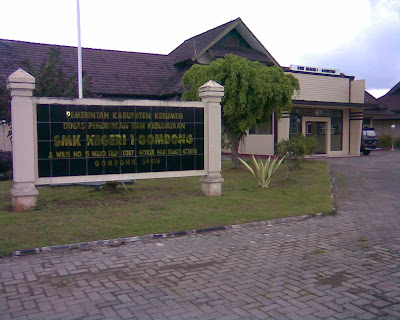AROUND PROCESS AT THERMODYNAMIC
- The meaning of around process
Change effort become calor can do continuing. But change calor become effort is not easy because it include a border gas room. To change calor become effort continue must be doing. In order gas did that effort back to first time. Process like this is around process or siclus or daur.
Total outside work in one cycle can say:
∆W = Wab - Wbc or ∆W = area abca.
In the application a process, a process circumfevence (cycle) do in a heat machine example:
- Otto machine, that cycle so otto cycle
- Diesel machine, that cycle so diesel cycle
- Steam machine, that cycle so rannkine cycle
- Carnot machine
Since year 1824 a engineer and specialist physics, his name Sardi Carnot, have success making a base theory about circlus in the machine, than caoold carnot machine and than circlus caoold carnot circlus. Carnot machine is ideal heat machine working cirqusly and can reversible between double temperature.
Carnot machine imagine as machine consist of a contain cylinder ideal gas and closed with piston can move to and so inside the cylinder.
Because in one siklus, gas back to the first position, so nothing the change in energy (∆U= 0). So, effort be done at gas (∆W) in one siklus is:
∆Q=∆U + ∆W → +Q1 – Q2 = 0 + ∆W
W = Q1 – Q2
With:
Q1 = calor reserved from high temperature reservoir T1
Q2 = calor be throwed to low temperature reservoir T2
∆W = effort in one siklus.
- Efficiency Carnot Machine
Carnot machine is the most efficient of machine. The siklus just form only siklus teoritik. Scheme to draw change calor become effort in calor machine, included carnot machine.
· To machine vapour, reservoir temperature high is a field vapour and reservoir to low temperature and that machine.
· To machine inlediarism, reservoir high temperature is a mixture in gradient in cylinder exaclly reservoir low temperature is a field that machine.
For production effort W, obliged the energy. Equal between effort for production with calor for pernetrate for machine. It is efficiency machine.
Efficiency machine : η=W: Q1 x 100% or η=(1-Q2/Q1) x 100%
Formulation efficiency machine in grade public and efficiency machine carnot on. For drawing to efficiency machine not think to reace for 100%. Because not think all calor a penetrate machine all at evolured become effort. But the carnot, to all machine it work with penetrate calor to reservoir T1 and lash calor to reservoir T2 not efficiency machine carnot.
- Entrophy and second law thermodynamic
a. Meaning of entropy
Entrophy concept connected with ones method observation second law thermodynamic. Entrophy is certain measure of much energy or calor is can’t changed become labour. Look like inside energy, entrophy into condition function, so entrophy price only hang to first condition and last condition system and not hang to circuit attacked reach out for that last condition.So for the cycle thermodynamic where gas begin from condition attacking circuit certainly and back again from the beginning, entropy changed (∆S) same with zero (∆S=0) .
If the system on absolute temperature T experience reversible process with absorb as much as kalor Q, so raise entrophy (∆s) explain
∆S=(Q/T)
With:
∆S= raise (changed) entropy, just a few J/K or JK-1.
Reversible process and Ireversible









